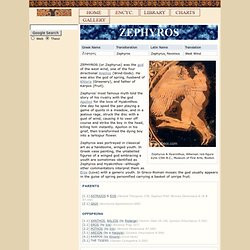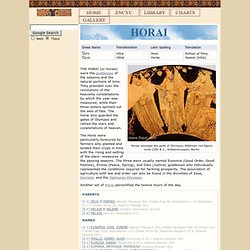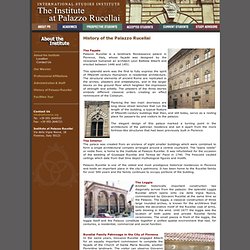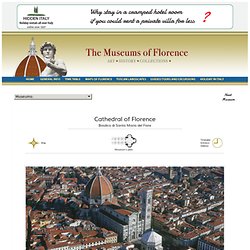

Giotto, The Lamentation, c. 1305. Jan van Eyck, Portrait of Giovanni Arnolfini and his Wife. Fra Angelico (1395/14001455) Convent of San Marco. The present convent stands on a site occupied since the 12th century by a Vallombrosan monastery which later passed to the Silvestrines; they were driven out of San Marco in 1418, and in 1438 the convent was given to the Dominican Observants.

In 1437 Cosimo il Vecchio de’ Medici decided to rebuild the entire complex, at the suggestion of Antonino Pierozzi the Vicar-General. Lorenzetti, Allegory of Good Government and the Effects of Good and Bad Government, 1337-40. Giotto, The Lamentation, c. 1305. Mona Lisa – Portrait of Lisa Gherardini, wife of Francesco del Giocondo. The drawings of Leonardo da Vinci. Santa maria delle grazie. Leonardo da Vinci, Letter to the Duke of Milan. Leonardo da Vinci: Mona Lisa — Humanistinen tiedekunta. Leonardo da Vincin elämänvaiheet Leonardo syntyi huhtikuun 15. päivä vuonna 1452 Firenzen lähellä sijaitsevassa pienessä Vincin kylässä.

Hän oli varakkaan firenzeläisen notaarin Ser Piero da Vincin ja paikallisen maalaistytön Caterinan avioton lapsi. Leonardo kasvoi isänsä puolen sukulaisten hoivissa ja perheen muutettua Firenzeen 1460-luvun puolivälissä hänelle avautui mahdollisuus saada parasta mahdollista opetusta, jota Italian älymystön ja taiteen keskus Firenze pystyi tarjoamaan. Jo nuorena erityistä musiikillista, kuvataiteellista ja matemaattista lahjakkuutta osoittanut Leonardo kehittyi varsin nopeasti.
Noin vuonna 1466 hän pääsi aikansa johtavan firenzeläisen maalarin ja kuvanveistäjän Andrea del Verrocchion oppiin. Noin vuonna 1482 Leonardo saapui Milanoon. Firenzessä vuonna 1502 Leonardo siirtyi Romagnan herttuan Cesare Borgian palvelukseen ja hänestä tuli herttuan pääarkkitehti ja insinööri. Art History: High Renaissance.
Celebrity & Art: Leonardo's "Mona Lisa" Art History: High Renaissance. David by Michelangelo. Art History: Florence. Art History: High Renaissance. Sistine Chapel. Michelangelo, Ceiling of the Sistine Chapel. Art History: High Renaissance. Web Gallery of Art, image collection, virtual museum, searchable database of European fine arts (1000-1900) Art History: High Renaissance. Uffizi - Department of print and drewings. Botticelli, Primavera. La Primavera (Spring) The birth of Venus. Botticelli, Birth of Venus. ZEPHYRUS : Greek god of the west wind ; mythology ; pictures : ZEPHYROS, FAVONIUS.
ZEPHYROS (or Zephyrus) was the god of the west wind, one of the four directional Anemoi (Wind-Gods).

He was also the god of spring, husband of Khloris (Greenery), and father of Karpos (Fruit). Zephyros' most famous myth told the story of his rivalry with the god Apollon for the love of Hyakinthos. One day he spied the pair playing a game of quoits in a meadow, and in a jealous rage, struck the disc with a gust of wind, causing it to veer off course and strike the boy in the head, killing him instantly. Apollon in his grief, then transformed the dying boy into a larkspur flower. Zephyros was portrayed in classical art as a handsome, winged youth. Hesiod, Theogony 378 ff (trans. Pseudo-Hyginus, Preface (trans. Pausanias, Description of Greece 3. 19. 3 - 5 (trans. Philostratus the Elder, Imagines 1. 24 (trans. Greek & Roman mythology, w/ Pictures, Khloris. HORAE : Greek Goddesses of the Seasons & the Natural Order. THE HORAI (or Horae) were the goddesses of the seasons and the natural portions of time.

They presided over the revolutions of the heavenly constellations by which the year was measured, while their three sisters spinned out the web of fate. The Horai also guarded the gates of Olympos and rallied the stars and constellations of heaven. The Horai were particularly honoured by farmers who planted and tended their crops in time with the rising and setting of the stars--measures of the passing seasons. The three were usually named Eunomia (Good Order, Good Pasture), Eirene (Peace, Spring), and Dike (Justice) goddesses who individually represented the conditions required for farming prosperity. Art History: High Renaissance. Raphael, Madonna of the Goldfinch. Vasari, Lives of the Artists. GIORGIO VASARI'S LIVES OF THE ARTISTS. Medici Riccardi Palace - Florence - Museums - Monuments - Renaissance and Baroque Architecture. History of Palazzo Rucellai.
The Façade Palazzo Rucellai is a landmark Renaissance palace in Florence, Italy, whose façade was designed by the renowned humanist an architect Leon Battista Alberti and erected between 1446 and 1451.

This splendid work was the first to fully express the spirit of fifteenth century Humanism in residential architecture. S. Andrea - Leon Battista Alberti. Sources on S.

Andrea Robert Adam. Classical Architecture. London: Penguin Books, 1990. ISBN 0-670-82613-8. Werner Blaser and Monica Stucky. Howard Davis. Brunelleschi, Pazzi Chapel. Linear Perspective: Brunelleschi's Experiment. Masaccio, Holy Trinity. Cathedral of Florence. The typical Italian Gothic building, the Cathedral of Florence, is dedicated to "Santa Maria del Fiore".

The church was designed by Arnolfo di Cambio (c1245-1302) who considerably enlarged the existing religious structure. Cathedral of Florence Museum. The present museum was founded in 1891 and has continued to receive all the works that were removed and continue to be removed (to grant their preservation) from S.

Maria del Fiore and from the Baptistery. Art History: Florence.